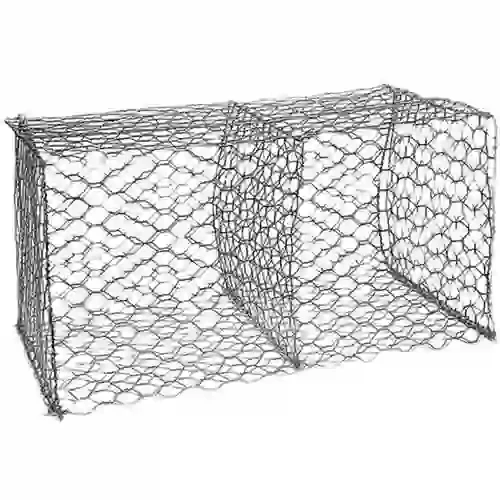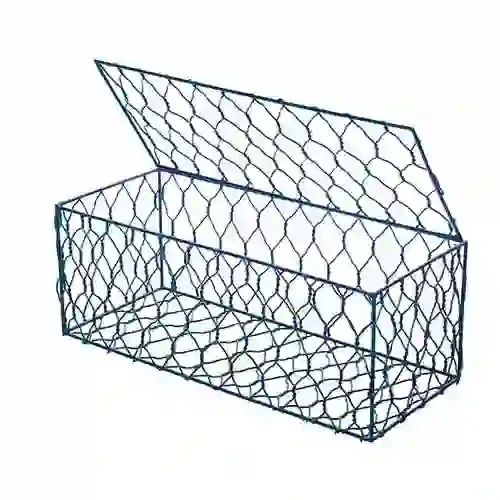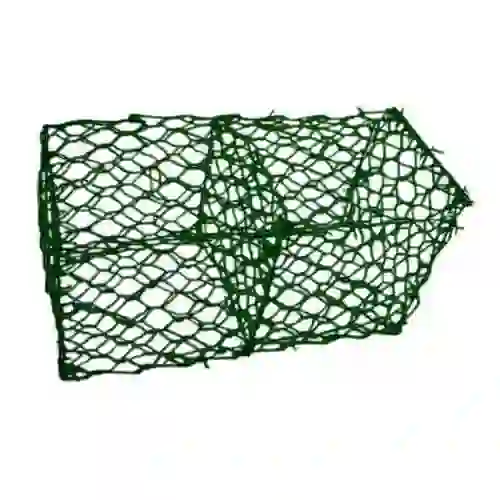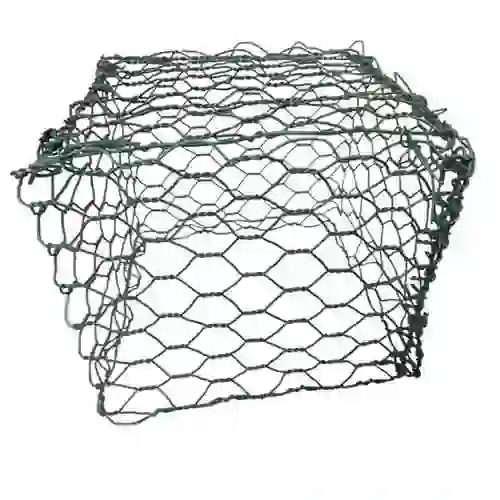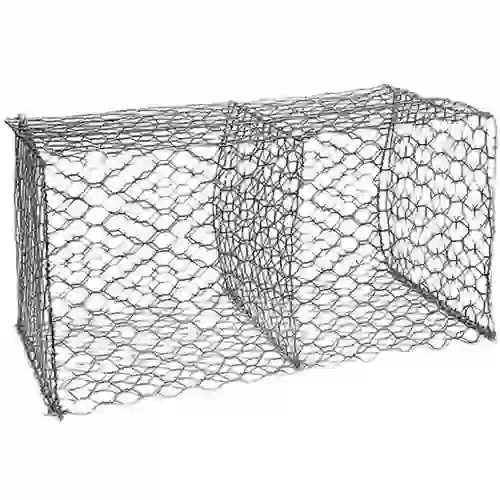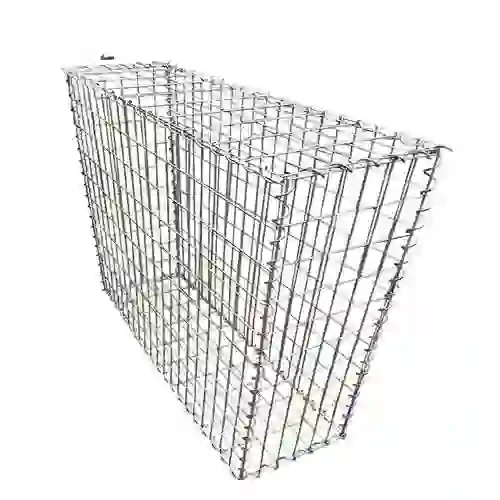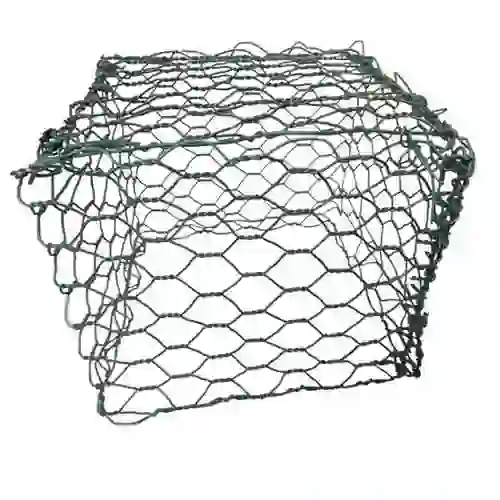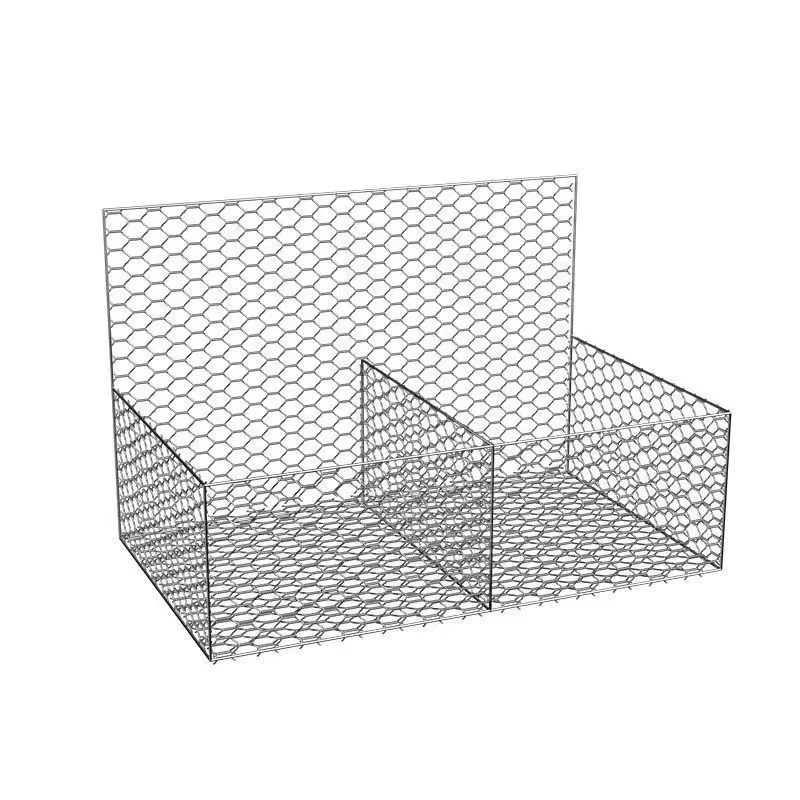-
 Phone:
Phone: -
 Email:
Email:

Durable Rockfall Net for Superior Slope Protection
The Imperative Role of Rockfall Netting Systems in Modern Infrastructure and Geohazard Mitigation
In an era defined by expanding global infrastructure and increasingly unpredictable climate patterns, the safeguarding of critical transportation routes, residential areas, and industrial facilities against natural geohazards has emerged as a paramount engineering challenge. Among the most effective and versatile solutions for mitigating these risks is the deployment of advanced rockfall net systems. These meticulously engineered barriers are designed to prevent the uncontrolled descent of rocks, boulders, and debris from unstable slopes, thereby protecting human life, property, and the continuity of vital operations. The escalating frequency and intensity of extreme weather events, coupled with anthropogenic activities such as extensive construction in mountainous or undulating terrains, have significantly amplified the susceptibility of landscapes to various forms of slope instability, including rockfalls, shallow landslides, and debris flows. Consequently, the demand for robust and adaptable rock netting slope protection has surged across diverse sectors, ranging from large-scale civil engineering projects to mining operations and urban development initiatives. Modern rockfall protection netting systems represent a culmination of sophisticated material science, innovative structural design, and rigorous testing protocols, offering solutions that transcend the limitations of traditional, rigid mitigation strategies like concrete walls or shotcrete. Unlike their predecessors, these flexible and high-energy-absorbing systems integrate seamlessly with the natural topography, minimizing environmental impact while delivering superior protective capabilities. They are characterized by their remarkable capacity to deform under impact, dissipating significant kinetic energy from falling rocks without catastrophic failure, a fundamental advantage that underpins their widespread adoption in areas prone to dynamic geological activity. Furthermore, the economic viability of these systems, considering both initial installation costs and long-term maintenance requirements, positions them as a highly attractive option for decision-makers seeking sustainable and cost-effective geohazard mitigation solutions. The industry's trajectory indicates a continuous evolution in material compositions, coating technologies, and installation methodologies, all aimed at enhancing the durability, aesthetic integration, and overall performance of these critical safety infrastructures. As global development continues to encroach upon complex geological formations, the strategic application of advanced rockfall net technologies will remain indispensable in ensuring safety and resilience in the face of persistent natural threats. This comprehensive approach to slope stabilization and protection underscores not only a commitment to safety but also a strategic investment in the longevity and reliability of essential infrastructure worldwide, making the selection of the right rock netting slope protection a decision of paramount importance for any project owner or engineering firm operating in challenging terrains.
Engineering Excellence: Unveiling the Manufacturing Process and Material Innovations in Rockfall Netting
The robust performance and longevity of a rockfall net system are inextricably linked to its fundamental composition and the precision of its manufacturing process, a complex interplay of material science, advanced weaving techniques, and stringent quality control. At its core, the primary material for high-quality rock fall netting is high-tensile steel wire, specifically chosen for its exceptional strength-to-weight ratio, ductility, and ability to absorb significant kinetic energy without fracturing. This raw steel wire undergoes a rigorous drawing process, where it is progressively pulled through a series of dies to achieve the precise diameter required for various netting specifications, ranging typically from 2.0 mm to 4.0 mm or even thicker for specialized applications. Following the drawing process, the wires are subjected to a multi-stage corrosion protection treatment, which is critical for ensuring the long-term durability of the netting, especially in harsh outdoor environments. The most common and effective method is heavy galvanization, where the steel wires are immersed in molten zinc, creating a metallurgically bonded coating that acts as a sacrificial anode, protecting the underlying steel from rust and corrosion. For enhanced protection against highly aggressive environmental conditions, such as saline or acidic atmospheres, a PVC (Polyvinyl Chloride) coating is often applied over the galvanized layer. This PVC coating provides an additional barrier against abrasion, chemical attack, and UV degradation, significantly extending the service life of the rockfall protection netting. The application of PVC is meticulously controlled to ensure uniform thickness and adhesion, typically ranging from 0.4 mm to 0.6 mm, which contributes to the aesthetic integration of the netting with the natural landscape by offering various color options, such as green or black. The manufacturing of the netting structure itself typically employs specialized weaving machinery, primarily for double-twist hexagonal mesh (Gabion-style mesh, relevant to the product Gabion, which is often used for retaining walls or as base for nets) or high-strength woven wire mesh for drapery systems. The double-twist method ensures that even if one wire breaks, the integrity of the mesh is largely maintained due to the interconnected twists, preventing unraveling and localized failure. For more demanding applications requiring extreme energy absorption, ring nets or high-tensile wire mesh with specific knot configurations are utilized, where each intersection is mechanically secured to prevent slippage under load. The manufacturing process adheres to rigorous international standards such as ASTM A975 (Standard Specification for Double-Twisted Hexagonal Mesh Gabions and Revet Mattresses), EN 10223-3 (Steel wire and wire products for fencing and netting), and ISO 9001 for quality management systems, ensuring consistent product quality and performance. Furthermore, internal quality control protocols involve continuous monitoring of wire diameter, zinc coating weight, PVC coating thickness, mesh opening size, and tensile strength testing of both individual wires and finished mesh panels. Destructive and non-destructive tests, including salt spray tests for corrosion resistance and UV exposure tests for coating stability, are routinely conducted on samples from each production batch. The typical lifespan of heavily galvanized and PVC-coated rock netting slope protection can extend beyond 50 years in temperate climates, offering substantial long-term value. These systems are widely applicable across various industries beyond just civil engineering, including specialized roles in the petrochemical sector (e.g., stabilizing slopes near pipelines or refinery structures), metallurgy (protecting mining pits or processing plants from unstable rock faces), and even water supply and drainage infrastructure (stabilizing slopes adjacent to reservoirs, canals, or pumping stations to prevent contamination or damage from rockfalls). In such typical application scenarios, the advantages are multifold, including significant energy absorption capacities that protect critical installations from impact damage, inherent flexibility that allows the netting to conform to irregular terrains without extensive pre-shaping, superior corrosion resistance that minimizes maintenance requirements in aggressive environments, and a porous structure that facilitates natural drainage and revegetation, contributing to ecological balance rather than hindering it. Unlike rigid structures, the semi-flexible nature of the netting allows for continuous deformation and adaptation under dynamic loads, ensuring that the system remains effective over its extended service life, making it a highly reliable and economically sensible choice for long-term geohazard mitigation.
Technical Parameters and Performance Metrics of Advanced Rockfall Netting Systems
Understanding the intricate technical parameters of rockfall net systems is fundamental for engineers and project managers to specify the most appropriate solution for a given geological challenge, ensuring optimal safety and cost-effectiveness. The performance capabilities of rock netting slope protection are quantified through a series of critical metrics, each contributing to the system's overall resilience and longevity. Key among these is the wire diameter, which directly correlates with the tensile strength of individual wires and, consequently, the entire mesh panel. Standard diameters typically range from 2.0 mm to 4.0 mm for common hexagonal mesh and can be significantly larger for specialized high-energy absorption systems like ring nets or high-tensile mesh, dictating the load-bearing capacity and puncture resistance. Closely related is the mesh size (opening), measured diagonally from knot to knot for hexagonal mesh, or in square/rectangular dimensions for woven or welded mesh. Common mesh sizes for rock fall netting vary from 50x70 mm for smaller debris retention to 100x120 mm or larger for general rockfall protection, influencing the size of rock fragments the net can effectively retain. The tensile strength of the wire, typically measured in N/mm² or MPa, is a crucial indicator of the wire's ability to withstand pulling forces before breaking, with high-tensile steel wires often exceeding 400 MPa. This directly translates to the panel tensile strength and punching resistance of the netting, which determines its capacity to resist rupture from sharp, angular rock impacts. Perhaps the most critical performance metric for active rockfall protection netting systems is energy absorption capacity, expressed in kilojoules (kJ). This quantifies the maximum kinetic energy a system can safely dissipate upon impact from falling rocks without failure. Systems can range from passive drapery systems (low kJ) to active barriers designed to absorb hundreds or even thousands of kilojoules from specific rockfall events, often verified through full-scale impact testing according to standards like ETAG 027 (European Technical Guideline for Falling Rock Protection Kits). Another vital parameter is corrosion resistance, achieved primarily through the galvanization level (zinc coating mass, e.g., 240 g/m² to 290 g/m² according to ASTM A641/A975) and the thickness and quality of the PVC coating. These protective layers significantly extend the operational lifespan of the netting, especially in corrosive environments such as coastal areas or industrial zones, directly impacting the system's long-term cost-effectiveness and reducing maintenance cycles. UV stability of the PVC coating is also crucial for regions with high solar radiation, preventing material degradation and ensuring aesthetic integrity over decades. The selection of specific parameters is always site-specific, requiring detailed geological surveys, rockfall trajectory analysis, and energy calculations. For instance, a draped rockfall net system on a relatively stable slope might only require a standard 2.7 mm galvanized wire with a 100x120 mm mesh, whereas an active barrier designed to stop high-energy rockfalls in a critical zone might demand a 4.0 mm wire with specialized high-tensile mesh, often combined with energy-absorbing brake elements, to achieve impact absorption capacities of several thousand kilojoules. The table below illustrates typical specifications for various rockfall net types, providing a comprehensive overview for technical decision-making.
Typical Rockfall Netting Specifications and Performance Overview
| Parameter | Drapery Net (Gabion-style Mesh) | High-Tensile Woven Net (TECCO®/SpiderNet® Type) | Ring Net Barrier (Active System) |
|---|---|---|---|
| Wire Material | High-Strength Steel Wire | High-Tensile Steel Wire (Min. 1770 N/mm²) | Galvanized Steel Ring Wire (Min. 1570 N/mm²) |
| Wire Diameter | 2.2 mm - 3.4 mm (Internal) | 3.0 mm - 4.0 mm | Typically 3.0 mm - 4.5 mm per ring link |
| Mesh Type/Size | Double-Twist Hexagonal (60x80mm, 80x100mm, 100x120mm) | Woven High-Tensile Mesh (e.g., 83x140mm, 80x100mm openings) | Interconnected Steel Rings (various ring diameters, e.g., 250-300mm) |
| Corrosion Protection | Heavy Galvanization (Min. 240 g/m²) + optional PVC coating (0.4-0.6mm) | SUPERCOATING® / GEOBRUGG Supercoating® (ZnAl alloy) or ZnAl + Polymer | Heavy Galvanization / ZnAl coating |
| Typical Lifespan | 30-50+ years (with PVC) | Up to 100 years (with advanced coatings) | 50-100+ years (with advanced coatings) |
| Energy Absorption Capacity (EAC) | Passive System (Designed to guide, not absorb direct impact) | Active Systems: 100 kJ - 1000 kJ (depending on anchor pattern & system design) | Active Barriers: 250 kJ - 10,000 kJ (certified to ETAG 027) |
| Installation Type | Drapery (passive) or actively pinned | Actively pinned (tensioned) | Free-standing barriers or catch fences |
| Typical Applications | Unstable slopes with frequent small rockfalls, debris retention, general slope stabilization. | Highly unstable rock faces requiring active stabilization, targeted landslide protection. | Protection of critical infrastructure (roads, railways, buildings) against high-energy rockfalls. |
The tabulated data clearly delineates the spectrum of rockfall net solutions available, from passive drapery systems that guide falling rocks to a collection point at the slope's base, to highly dynamic, active barrier systems designed to directly absorb massive impact energies. For example, while a traditional double-twist hexagonal mesh (similar to that used in Gabions) is excellent for general rock netting slope protection and debris containment, its energy absorption capacity is inherently limited compared to specialized high-tensile woven nets or ring net barriers. The latter categories are specifically engineered for critical applications where high-energy impacts are anticipated, leveraging advanced material properties and structural designs that allow for significant deformation and kinetic energy dissipation. Manufacturers often provide detailed design guidelines and software tools based on these parameters, enabling engineers to perform precise calculations and simulations to determine the optimal rockfall protection netting configuration for specific site conditions. This includes factors such as slope angle, rock size and volume, impact velocity, and the distance to the protected asset. By meticulously evaluating these technical parameters, stakeholders can make informed decisions that ensure the long-term safety and resilience of infrastructure against the persistent threat of rockfalls, embodying a commitment to both engineering integrity and public safety.
Versatile Applications and Strategic Deployment Scenarios of Rockfall Protection Netting
The versatility of rockfall net systems extends across a broad spectrum of challenging environments and critical infrastructure projects, making them an indispensable component in comprehensive geohazard management strategies worldwide. Their adaptability to diverse topographies and geological conditions, coupled with their inherent flexibility and high energy absorption capabilities, allows for deployment in scenarios where rigid structures are either impractical, economically unfeasible, or environmentally undesirable. One of the most prevalent application areas for rock netting slope protection is along highways and railways, particularly in mountainous regions or areas with excavated cut slopes. Here, the primary objective is to prevent falling rocks from obstructing traffic, damaging vehicles, or causing accidents, thereby ensuring the safety and continuous flow of transportation. Whether it's a passive drapery system guiding rocks to a ditch or an active barrier positioned to catch high-energy impacts, these nets are crucial for maintaining operational efficiency and public safety on vital transportation arteries. Mining sites represent another significant application, where rock fall netting is used to stabilize open-pit mine slopes, protect access roads, and secure operational areas from collapsing rock faces. The abrasive and chemically aggressive environments often found in mining necessitate heavily coated netting systems for extended durability and reduced maintenance. In residential areas and urban developments situated near natural or excavated slopes, rockfall protection netting provides a vital buffer, safeguarding homes, schools, and public spaces from potential rockfall events. Here, aesthetic considerations often play a role, with green or black PVC-coated nets blending more seamlessly into the landscape. Unstable slopes, whether natural or artificially created, are prime candidates for both passive and active rockfall net installations. Passive drapery systems, where the netting is simply draped over the slope and anchored at the top, allow rocks to fall harmlessly behind the net and collect at the toe, where they can be periodically removed. This method is particularly effective for large, irregular slopes with frequent small-to-medium sized rockfalls. Conversely, actively pinned systems involve tensioning the netting directly against the slope face using a grid of anchors and spiked plates, providing active stabilization by applying compressive forces to the unstable rock mass. This approach is ideal for localized unstable areas or where preserving the existing vegetation is paramount. Critical infrastructure such as power plants, communication towers, reservoirs, and pipeline corridors also heavily rely on rock netting slope protection to ensure uninterrupted service and prevent catastrophic damage. For example, protecting a hydro-electric power plant's intake from large boulders or securing slopes above a major gas pipeline requires systems with extremely high energy absorption capacities and robust design. Beyond these general categories, rockfall net systems are increasingly being deployed in post-wildfire recovery efforts. Wildfires often denude slopes of vegetation, making them highly susceptible to debris flows and shallow landslides during subsequent rainfall events. Netting systems can provide immediate, temporary, or permanent stabilization to these vulnerable areas, preventing further erosion and mass wasting. They are also used for avalanche protection in certain scenarios, guiding snow and debris, and in quarries for worker safety. The inherent advantages of using rockfall protection netting in these diverse environments are manifold. Its flexibility allows it to conform to highly irregular rock faces, reducing the need for extensive site preparation and costly civil works. The open mesh structure facilitates natural drainage, preventing hydrostatic pressure buildup behind the net and promoting revegetation, thus integrating environmentally. Compared to rigid concrete structures, rockfall net installations are often more rapid, less disruptive to the natural landscape, and significantly more cost-effective over their extended lifespan due to lower material and installation costs, combined with minimal maintenance requirements. This combination of adaptability, performance, and environmental consideration makes modern rockfall net systems the preferred solution for a vast array of geohazard mitigation challenges globally.
Unpacking the Technical Advantages of High-Performance Rockfall Netting: A Comparative Perspective
The technical advantages offered by high-performance rockfall net systems are profound and multifaceted, establishing them as superior alternatives to conventional slope stabilization methods, particularly in dynamic and environmentally sensitive settings. At the forefront of these benefits is their exceptional energy absorption capacity. Unlike rigid structures such as concrete walls, gabion baskets (when used as rigid retaining structures, although the Gabion product itself is flexible and can be used as a base for nets), or shotcrete, which are designed to resist impact with minimal deformation and can be prone to brittle failure under extreme loads, modern rock netting slope protection systems are engineered for controlled deformation. This ductile behavior allows the net to stretch and dissipate the kinetic energy of falling rocks and boulders over a larger area and longer duration, significantly reducing peak impact forces. This ability to absorb high levels of energy (often ranging from hundreds to thousands of kilojoules, depending on the system) ensures that even severe rockfall events can be safely contained without compromising the structural integrity of the barrier or the protected infrastructure. This inherent flexibility also translates into remarkable adaptability to irregular terrain. Natural rock slopes are rarely uniform; they feature complex contours, fissures, and varying geological strata. Fabricating rigid structures to conform to such irregularities is labor-intensive, costly, and often leads to gaps or weak points. In contrast, rock fall netting systems, being inherently pliant, can be draped or pinned directly onto uneven rock faces, providing intimate contact and comprehensive coverage, thereby minimizing bypass opportunities for falling debris. This adaptability simplifies installation, reduces excavation requirements, and preserves the natural aesthetics of the landscape. The durability and longevity of these systems are further enhanced by advanced material science. High-tensile steel wires, combined with multi-layered corrosion protection coatings such as heavy galvanization (zinc coating) and optional PVC or advanced polymer coatings, ensure that the netting can withstand decades of exposure to harsh environmental conditions, including extreme temperatures, aggressive chemicals, and UV radiation. These superior coatings provide a significantly longer design life, often exceeding 50 years, compared to untreated steel or less robust protective measures, translating into lower lifecycle costs and reduced maintenance frequency for the rockfall protection netting. The low visual impact of these systems is another significant advantage, particularly in scenic areas or urban settings. Unlike monolithic concrete structures that can be intrusive and detract from the natural environment, the open mesh structure of rockfall net systems allows for light and air penetration, promoting natural revegetation over time. This greening effect helps the netting blend seamlessly into the landscape, maintaining environmental harmony and often satisfying stricter environmental regulations. From an operational standpoint, the rapid installation associated with rock netting slope protection offers considerable project efficiency. Netting panels are relatively lightweight and can be deployed rapidly by skilled teams, often requiring less heavy machinery and on-site concrete mixing compared to traditional methods. This significantly reduces project timelines, minimizes disruption to traffic or site operations, and lowers overall labor costs. Finally, the cost-efficiency over time of rockfall net systems is compelling. While initial material costs might vary, the combination of faster installation, minimal maintenance requirements, and an extended service life often results in a lower total cost of ownership compared to less flexible or durable solutions. This long-term economic benefit, coupled with the enhanced safety and environmental advantages, solidifies the position of high-performance rockfall net systems as the intelligent and sustainable choice for modern geohazard mitigation.
Manufacturer Landscape and Strategic Selection: A Comparative Analysis of Rockfall Net Suppliers
Navigating the landscape of rockfall net manufacturers requires a strategic approach, as the choice of supplier profoundly impacts the quality, performance, and long-term reliability of geohazard mitigation projects. While numerous companies offer rock netting slope protection solutions, discerning project stakeholders must evaluate key differentiating factors beyond mere price to ensure successful project outcomes and meet stringent safety standards. A primary consideration is the manufacturer's commitment to quality certifications and adherence to international standards. Reputable suppliers will hold ISO 9001 certification for quality management, and their products should comply with relevant engineering standards such as ASTM A975 (for gabion-style double-twist mesh), EN 10223-3, or even more specialized standards like ETAG 027 for energy-absorbing barriers. Certifications from independent testing bodies and third-party verification of product performance are crucial indicators of a manufacturer's dedication to consistent, high-quality output. Another critical differentiator is the manufacturer's R&D capabilities and material innovation. Leading companies continuously invest in research and development to enhance wire alloys, improve corrosion protection coatings (e.g., advanced ZnAl coatings, multi-layer polymer coatings), and develop new mesh geometries or system components that offer superior energy absorption, extended lifespan, or easier installation. Manufacturers with a strong R&D pipeline are often at the forefront of introducing solutions that address emerging geohazard challenges or improve environmental integration. A supplier's project experience and global footprint provide valuable insights into their capacity to handle complex projects. Companies with a long history of successful deployments across diverse geological and climatic conditions—from alpine regions to desert landscapes and coastal environments—demonstrate proven expertise. Their global presence often implies a robust logistics network and understanding of regional regulatory requirements, which can be critical for large-scale international projects requiring rock fall netting. The availability of customization options and engineering support is paramount. Every rockfall site is unique, demanding tailored solutions rather than off-the-shelf products. A top-tier rockfall protection netting manufacturer should offer comprehensive engineering design assistance, including site assessment, numerical modeling, bespoke system design, and the ability to produce netting with specific wire diameters, mesh sizes, or panel dimensions. This collaborative approach ensures that the chosen solution is precisely optimized for the site-specific conditions and risk profile. Furthermore, the reliability of the supply chain and delivery timelines are vital for maintaining project schedules. Manufacturers with efficient production processes, substantial inventory, and dependable global shipping capabilities can minimize delays and ensure that materials are delivered precisely when needed. Finally, assessing the after-sales support and warranty provisions is essential. A reputable manufacturer stands behind its products with clear warranty terms covering material defects and performance, and provides ongoing technical support, installation guidance, and training programs. This comprehensive support network instills confidence and ensures long-term operational success of the rockfall net system. While a direct table comparing specific manufacturers is beyond the scope of this general technical overview, a comparative framework can be applied. For instance, some manufacturers might specialize in high-energy absorption barriers (e.g., Geobrugg, Maccaferri), while others might excel in large-scale drapery systems or general slope stabilization (e.g., Gabion-style mesh manufacturers, including our product at wiremeshpro.com). Companies like ours, which produce products like Gabions, often leverage our core expertise in wire mesh production to offer high-quality foundational components and complementary solutions for comprehensive slope protection. When making a strategic selection, it is crucial to request detailed product data sheets, project references, and engage in thorough technical discussions to ensure the chosen rock netting slope protection aligns perfectly with project requirements, regulatory compliance, and long-term performance expectations.
Tailored Solutions and Customization in Rockfall Protection Systems
Recognizing that no two geological sites are identical, the provision of tailored solutions and extensive customization capabilities is a hallmark of leading rockfall net manufacturers, ensuring optimal safety and cost-effectiveness for diverse projects. A "one-size-fits-all" approach to rock netting slope protection is inherently insufficient given the complex interplay of site-specific factors that dictate the most effective mitigation strategy. The design of a bespoke rock fall netting system begins with a comprehensive site assessment, which typically involves geological and geotechnical investigations to understand the rock mass characteristics (e.g., jointing patterns, rock type, weathering degree), hydrological conditions, and the specific mechanisms of potential instability (e.g., wedge failures, planar slides, toppling, or debris flows). Crucially, the slope gradient and height are paramount, as they influence the velocity and energy of potential rockfalls. A steeper, higher slope demands a more robust and energy-absorbing system. The volume and size of anticipated rockfalls are also critical; smaller debris might only require a fine mesh draped system, whereas large boulders necessitate heavy-duty barriers with significant energy absorption capacities. Environmental considerations play a significant role in customization. This includes sensitivity to landscape aesthetics, local flora and fauna, drainage patterns, and prevailing climatic conditions (e.g., high rainfall, freeze-thaw cycles, saline environments). For instance, in environmentally sensitive areas, manufacturers might recommend specific PVC coating colors that blend seamlessly with the natural surroundings, or designs that facilitate revegetation. Similarly, for coastal or industrial sites, enhanced corrosion protection beyond standard galvanization, such as specialized ZnAl alloys or thick polymer coatings, would be customized to ensure longevity. Beyond material specifications, aesthetic requirements are increasingly important, especially for projects in visible urban or tourist areas. This could involve specific mesh patterns, color choices, or even system configurations that minimize visual intrusion while maximizing safety. The customization process extends to the selection of system components. For active rockfall protection netting systems, this includes tailoring the number, type, and spacing of anchors (e.g., passive grouted anchors, active pre-stressed anchors), connection elements (spike plates, load cells), and boundary ropes to distribute loads effectively and safely across the entire slope face. Energy dissipaters, such as brake elements in ring net barriers, are chosen based on the design energy absorption requirement. Our firm provides comprehensive engineering design and consultation support, working closely with clients from the initial concept phase through detailed design. This often involves the use of advanced numerical simulation and modeling tools (e.g., finite element analysis, discrete element method) to predict rockfall trajectories, simulate system responses under various impact scenarios, and optimize component sizing. This ensures that the custom rockfall net solution is not only effective but also engineered with a precise factor of safety. Furthermore, we offer material selection guidance, advising on the most suitable wire diameters, mesh types (e.g., hexagonal double-twist, high-tensile woven, ring nets), and corrosion protection systems based on the project's specific geological, environmental, and budgetary constraints. Finally, crucial installation guidance and supervision are often part of the customized solution package. Experienced technical teams can provide on-site training for installation crews, ensuring that the complex systems are deployed correctly and achieve their designed performance. This holistic approach to customization ensures that every rock netting slope protection project benefits from a precisely engineered solution that delivers maximum safety, long-term durability, and optimal economic value, tailored to its unique challenges.
Real-World Impact: Illustrative Case Studies and Project Successes with Rockfall Netting
The tangible benefits of advanced rockfall net systems are best demonstrated through their successful deployment in real-world scenarios, where they have consistently proven their efficacy in protecting critical infrastructure and ensuring public safety. These application cases highlight the versatility and robust performance of rock netting slope protection across diverse geological challenges and climatic conditions. Consider, for instance, a major highway expansion project in a mountainous region, such as the Andes or the Alps. As new tunnels and road sections were carved through unstable rock formations, engineers faced the recurring threat of large-scale rockfalls impacting the newly constructed lanes. Traditional methods like retaining walls were deemed economically prohibitive and environmentally disruptive. The solution involved the strategic deployment of a combination of passive drapery systems using heavy-duty double-twist hexagonal rock fall netting (similar to the mesh found in our Gabion product for its robustness) over extensive high slopes, complemented by several strategically placed active high-energy absorption barriers (e.g., ring nets or high-tensile woven nets) in critical impact zones. The drapery systems were anchored at the top of the slopes and allowed to conform to the irregular rock face, guiding smaller rockfalls to collection ditches at the road base, thereby minimizing maintenance interventions. The active barriers, engineered to withstand impacts exceeding 5,000 kJ, were positioned to protect specific sections of the highway from anticipated large boulder events. Post-installation monitoring and subsequent rockfall occurrences have repeatedly validated the system's effectiveness, preventing numerous incidents and significantly enhancing the safety and operational continuity of the highway, demonstrating remarkable reduced maintenance and enhanced public safety. Another compelling case involves post-wildfire slope stabilization in California. Wildfires devastate vegetation cover, leaving slopes highly susceptible to erosion, debris flows, and shallow landslides triggered by subsequent heavy rainfall. In one particular instance, a critical slope overlooking a residential community and an essential utility corridor became acutely unstable after a severe wildfire. Rapid deployment of actively pinned high-tensile rockfall protection netting was chosen for its ability to provide immediate stabilization and allow for subsequent revegetation. The netting, secured with deep anchors, applied compressive force to the unconsolidated topsoil and fractured rock, effectively preventing mass wasting during successive rainy seasons. This timely intervention not only protected homes and infrastructure but also facilitated the natural regrowth of vegetation by creating a stable substrate for seeds, illustrating the system's environmental synergy and rapid response capability, securing enhanced safety and environmental restoration. A third instance highlights the protection of an industrial facility located at the base of a historically unstable quarry face. The facility, housing valuable equipment and sensitive operations, was at constant risk from intermittent rockfalls. A custom-engineered hybrid rockfall net system was designed, integrating flexible mesh drapery with strategically placed tensioned rockfall fences. The netting provided comprehensive coverage over the fractured rock face, while the fences, equipped with advanced energy dissipaters, were positioned to absorb the impact of larger, higher-energy rockfalls that might detach. This multi-layered approach offered redundancy and a robust defense mechanism, ensuring the safety of personnel and the operational integrity of the industrial site. The solution was praised for its minimal footprint compared to alternative concrete structures and its ability to withstand extreme impacts without significant damage, leading to impressive project longevity and safeguarding critical assets. These cases underscore that the deployment of advanced rockfall net systems is not merely a technical choice but a strategic investment in resilience, offering measurable benefits in terms of safety, operational continuity, and long-term cost-efficiency across diverse and demanding applications.
Frequently Asked Questions (FAQ) about Rockfall Protection Systems
Clients and stakeholders often have specific questions regarding the implementation, maintenance, and long-term performance of rockfall net systems. Addressing these common inquiries is crucial for transparent decision-making and fostering confidence in rock netting slope protection solutions. Q1: How long does a rockfall net system typically last? The lifespan of a rockfall protection netting system is primarily determined by the quality of its materials and coatings. High-tensile steel wire, heavily galvanized and optionally coated with PVC or advanced polymer compounds, can provide a service life of 30 to 50 years, and even up to 100 years for systems with advanced ZnAl super-coatings, even in aggressive environments. Regular inspection and minimal maintenance contribute significantly to achieving this extended lifespan. Q2: Is rockfall netting environmentally friendly? Yes, modern rockfall net systems are designed with environmental considerations in mind. Unlike concrete structures, their open mesh design allows for natural drainage, prevents hydrostatic pressure buildup, and promotes revegetation. This helps the system blend into the landscape over time, minimizing visual impact and supporting ecological restoration, making them a more sustainable choice for slope stabilization. Q3: What are the main differences between passive drapery systems and active barriers? Passive drapery systems (like those using our Gabion-style mesh for general slope protection) are typically draped over a slope and anchored at the top, allowing rocks to fall behind the net and collect at the bottom. They guide and contain debris but do not actively prevent rock movement. Active barriers, conversely, are engineered to absorb significant impact energy directly, stopping rockfalls before they reach the protected area. These often involve tensioned high-tensile mesh or ring nets with energy-dissipating components, secured with a grid of anchors to the rock face. Q4: What maintenance is required for rockfall net systems? Maintenance for rock fall netting is generally minimal. It primarily involves periodic visual inspections (typically annually or bi-annually, more frequently after major rockfall events or extreme weather) to check for damage, corrosion, or debris accumulation. Minor repairs, such as patching small holes or re-tensioning specific sections, can be easily carried out. For drapery systems, accumulated debris at the base of the slope needs to be cleared periodically. Q5: How do you determine the right type of rockfall net for a specific site? Determining the optimal rock netting slope protection requires a comprehensive geotechnical assessment. This includes analyzing the slope's geology, rockfall kinematics (size, velocity, trajectory of potential falling rocks), existing geological hazards, and environmental factors. Engineers use this data, often combined with numerical modeling and simulation software, to select the appropriate wire diameter, mesh type, energy absorption capacity, and anchoring system, ensuring the solution is precisely tailored to the site's unique conditions and risk profile. Our technical team provides expert consultation during this critical design phase to guide clients to the most effective and efficient solution for their specific project needs. Q6: Can rockfall nets be installed on very steep or unstable slopes? Yes, rockfall net systems are inherently designed for challenging terrains, including very steep slopes where other methods are impractical. Their flexibility allows them to conform to irregular geometries, and specialized installation techniques, often involving rope access or helicopter-assisted deployment, enable their safe and effective installation even in highly inaccessible or unstable areas. The selection of the specific type of netting and anchoring system will depend on the degree of instability and the required level of protection.
Ensuring Project Success: Delivery, Warranty, and Expert Support for Rockfall Protection Systems
Beyond the intrinsic quality and engineering excellence of the rockfall net product itself, the success of any geohazard mitigation project is profoundly influenced by the reliability of the supply chain, the robustness of warranty provisions, and the depth of ongoing technical and customer support. Recognizing these critical factors, our commitment to our clients extends far beyond merely supplying high-performance rock netting slope protection. We pride ourselves on a streamlined and efficient delivery schedule management, understanding that timely material delivery is paramount to maintaining project timelines and avoiding costly delays. Our sophisticated logistics network and robust inventory management systems ensure that materials, whether standard rock fall netting panels or custom-fabricated components, are dispatched and delivered to project sites worldwide with precision and adherence to agreed-upon schedules. This proactive approach to supply chain reliability is a cornerstone of our service, minimizing disruptions and allowing project managers to execute their plans with confidence. Our commitment to quality assurance is unwavering, backed by comprehensive warranty policies that reflect our confidence in the durability and performance of our rockfall protection netting. We provide clear, transparent warranties covering material defects, manufacturing integrity, and the performance characteristics of our coatings. This means clients can invest with peace of mind, knowing that their rockfall net system is protected against unforeseen issues arising from product quality, ensuring long-term structural integrity and corrosion resistance as per design specifications. Our warranties are a testament to our adherence to stringent international manufacturing standards and our rigorous internal quality control processes. Furthermore, we recognize that the effective deployment of complex rock netting slope protection systems requires more than just high-quality materials; it demands expert knowledge and continuous assistance. Our dedicated customer support and technical assistance team comprises experienced geohazard engineers and product specialists. From the initial inquiry phase through detailed design, installation, and post-installation monitoring, our experts are available to provide comprehensive guidance. This includes assistance with site-specific design challenges, detailed installation procedures, troubleshooting, and best practices for system maintenance. We also offer training programs for client personnel and installation crews, ensuring they possess the necessary skills and understanding for safe and efficient deployment of our rockfall net solutions. These programs cover everything from proper anchoring techniques to tensioning procedures and safety protocols. Our post-installation services further underscore our long-term commitment. We can provide guidance on monitoring strategies for the installed rock fall netting, and offer advice on periodic inspections and any necessary remedial actions, ensuring the system continues to perform optimally throughout its extended service life. By integrating dependable delivery, robust warranties, and unparalleled expert support into every project, we do not merely supply products; we forge lasting partnerships, empowering our clients to achieve project success and build resilient infrastructure with absolute trustworthiness and peace of mind. This holistic service model reinforces our position as a premier provider in the geohazard mitigation industry, offering not just a product, but a complete solution and a promise of sustained performance.
Conclusion: The Enduring Importance and Future Outlook of Rockfall Netting in Geohazard Mitigation
In conclusion, the evolution and widespread adoption of advanced rockfall net systems underscore their indispensable role in safeguarding modern infrastructure and communities against the increasing threats posed by geological hazards. From safeguarding critical transportation arteries like highways and railways to protecting residential areas and industrial facilities, rock netting slope protection has emerged as a robust, adaptable, and economically viable solution. Its technical superiority, characterized by exceptional energy absorption capabilities, inherent flexibility to conform to complex topographies, and extended durability through advanced corrosion protection, positions it far ahead of traditional, rigid mitigation strategies. The meticulous manufacturing processes, adherence to stringent international standards, and continuous innovation in material science ensure that these systems deliver consistent, high-performance results over decades of service, embodying a long-term investment in safety and resilience. The ability to customize rock fall netting solutions to address unique site-specific geological, environmental, and aesthetic requirements further enhances their effectiveness, transforming theoretical protective measures into precisely engineered, real-world safeguards. As urban development continues to expand into challenging mountainous and undulating terrains, and as the frequency of extreme weather events escalates due to climate change, the demand for sophisticated geohazard mitigation solutions will only intensify. The future outlook for rockfall protection netting is marked by exciting advancements, including the integration of smart monitoring systems that utilize sensors to detect ground movement or impact events in real-time, allowing for proactive maintenance and enhanced safety management. Innovations in composite materials and hybrid systems that combine the strengths of various netting types with other stabilization techniques are also on the horizon, promising even greater versatility and performance. Furthermore, there is a growing emphasis on lifecycle assessment and sustainable engineering practices, pushing manufacturers to develop solutions with minimal environmental footprints, lower embodied energy, and enhanced recyclability at the end of their service life. As a leading provider of these essential solutions, we remain committed to pioneering these advancements, leveraging our deep expertise in wire mesh technologies, including our core Gabion product, to deliver comprehensive, trustworthy, and innovative rockfall net systems that meet the evolving demands of a challenging world. Our unwavering focus on quality, customer support, and tailored engineering solutions ensures that we continue to be the trusted partner for engineers, contractors, and project owners worldwide, empowering them to build a safer and more resilient future in the face of persistent natural threats. This enduring commitment to excellence solidifies the critical role of advanced rock netting slope protection in the global effort to mitigate natural disasters and protect vital infrastructure for generations to come.
References
For further technical insights and industry standards related to rockfall protection systems, please consult the following authoritative sources:
- ASTM A975/A975M - 18, Standard Specification for Double-Twisted Hexagonal Mesh Gabions and Revet Mattresses (Metallic-Coated Steel Wire or Metallic-Coated Steel Wire With PVC Coating). ASTM International.
- EN 10223-3:2013, Steel wire and wire products for fencing and netting - Part 3: Hexagonal steel mesh products for civil engineering purposes. European Committee for Standardization (CEN).
- EOTA ETAG 027, Guideline for European Technical Approval for Falling Rock Protection Kits. European Organisation for Technical Approvals (EOTA). (Note: ETAGs are being replaced by European Assessment Documents - EADs, but ETAG 027 is still widely referenced for rockfall barrier testing protocols).
- Maccaferri: Rockfall Protection Solutions. Industry leader's technical resources on rockfall mitigation.
- Geobrugg: Rockfall Protection. Provides extensive technical documentation and case studies on high-energy rockfall barriers.
-
Metal Products Company Galvanized Cable for SaleNewsAug.06,2025
-
Maintenance of Rock Wall with Wire MeshNewsAug.06,2025
-
Loop Tie Wire Cost Effective OptionsNewsAug.06,2025
-
High Quality Cable Cu Xlpe Swa Pvc SupplyNewsAug.06,2025
-
Durable Hexagonal Mesh Wire ProductsNewsAug.06,2025
-
Baling Wire Direct Reliable ServiceNewsAug.06,2025
-
Wire Mesh for Every Need: A Practical SolutionNewsJul.25,2025

